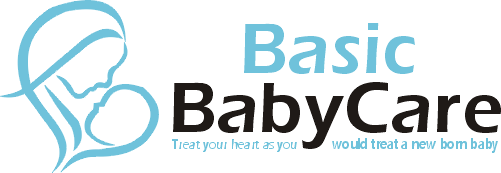If you notice that your baby’s diaper area is reddened or irritated, it could be nappy rash. Pampers helps protect your baby’s skin and nappy rash so it heals as quickly as possible.
What is a Nappy rash?
Nappy rash is a common form of inflamed skin in Australia. Indications of this are red or swollen skin around your baby’s diaper area.
Symptoms of Nappy rash
If your baby’s diaper area appears irritated and red, it’s most likely a nappy rash. The skin can also be slightly swollen and feel warm. Nappy rash can occur in a mild form (a few irritated red spots) or over a large area if tender red patches reach your baby’s stomach and thighs.
If there are reddish pustules in the area of your baby’s diaper or mouth with a red spot in the middle, it may be a yeast rash that you should treat with an antifungal ointment.
Your baby can not tell you by language what is wrong. Therefore, it expresses its discomfort by screaming and irritability – especially when changing the diapers – possibly also by loss of appetite.
Nappy rash: treatment and remedy
To treat a Nappy rash, change your baby’s diapers frequently to reduce the moisture on your skin. Here are some more tips for treating your baby:
- Leave your baby without diapers for some time each day.
- Carefully clean your baby’s buttocks after bowel movements and dry them before putting on a diaper.
- Apply a thick ointment containing zinc or an ointment prescribed by your pediatrician so that no urine can reach the inflamed skin.
- Consider possible changes in your baby’s diet or environment that might have caused the Nappy rash.
- See your pediatrician if the rash does not disappear after a few days or if you notice blisters or pus-filled pustules.
Prevent Nappy rash
Nappy rash is relatively common. Here are some tips you can use to help prevent it:
- If possible, change your baby’s diapers immediately if they are wet or dirty.
- Carefully clean your baby’s pod after each bowel movement. Wait until the area is really dry. Avoid rubbing the skin too much or too much.
- Apply a protective ointment or Vaseline to your baby’s bottom.
- If you put a fresh diaper on the baby, make sure that it is neither too tight nor too loose for air to circulate.
- Often check your child’s diaper area for antibiotics or diarrhea, and change diapers more often than usual.
What else can cause a rash?
Even if it looks like a nappy rash to you, it can also be another, typical for children and harmless skin irritation. Therefore, you should know the difference between a Nappy rash and other common diseases in order to choose the optimal treatment. Grind lichen, milk scab and heat pimple are often mistaken for nappy rash.
impetigo
The Grind fever is an infectious bacterial skin infection that occurs in the nappy area and on the face and hands as an itchy red rash with water or pus-filled blisters. Because of the risk of infection, all family members should often wash their hands with antibacterial soap to prevent transmission. In case of such rash, you should consult your pediatrician.
Cradle cap
Cradle cap is a skin condition that often occurs in infants in the first year of life. This skin disease is manifested by raised, deep red spots that occur with thick, white or yellow scales in the groin, on the genitals and abdomen of your baby. Often, these sites also show on the scalp. Treat the affected areas with an over-the-counter cortisone or hydrocortisone ointment and keep your baby clean and dry. If the condition does not change soon, please consult your pediatrician.
Heat rash
Heat and moisture can cause heat-tickling whenever sweat forms on the skin that cannot evaporate. This condition is rare after the third month and is reminiscent of an acne rash with very small, pink pustules. It can occur in the skin folds in the diaper area especially where the plastic insert of the diaper cuffs run along the skin or the diaper cloth comes into contact with the skin. Moisture and moisture are the most common causes of itching. Therefore, make sure that your child is not dressed too warm and his skin remains dry. In case of severe attack you should definitely consult your doctor.


